DIATRIZOIC ACID
Synonym(s):Amidotrizoic Acid;Diatrizoic acid;NSC 262168
- CAS NO.:117-96-4
- Empirical Formula: C11H9I3N2O4
- Molecular Weight: 613.91
- MDL number: MFCD00069960
- EINECS: 204-223-6
- SAFETY DATA SHEET (SDS)
- Update Date: 2025-11-21 15:10:21
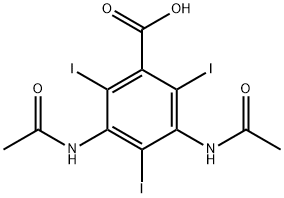
What is DIATRIZOIC ACID?
Toxicity
High osmolal radiocontrast agents like diatrizoate are cytotoxic to renal cells. The toxic effects include apoptosis, cellular energy failure, disruption of calcium homeostasis, and disturbance of tubular cell polarity, and are thought to be linked to oxidative stress.
Chemical properties
White Solid
Originator
Hypaque Sodium,Winthrop,US,1955
The Uses of DIATRIZOIC ACID
Diatrizoic acid is a gradient reagent used for blood cell separation and diagnostic aid (radiopaque medium). Diatrizoic acid may be used as an alternative to barium sulfate for medical imaging of the gastrointestinal tract, such as upper gastrointestinal series and small bowel series.
The Uses of DIATRIZOIC ACID
Density gradient reagent for blood cell seperation. Diagnostic aid (radiopaque medium)
The Uses of DIATRIZOIC ACID
radiopaque agent
Background
A commonly used x-ray contrast medium. As diatrizoate meglumine and as Diatrizoate sodium, it is used for gastrointestinal studies, angiography, and urography.
Indications
Used, alone or in combination, for a wide variety of diagnostic imaging methods, including angiography, urography, cholangiography, computed tomography, hysterosalpingography, and retrograde pyelography. It can be used for imaging the gastrointestinal tract in patients allergic to barium.
Definition
ChEBI: A member of the class of benzoic acids that is benzoic acid having iodo substituents at the 2-, 4- and 6-positions and acetamido substituents at the 3- and 5-positions. It is used, mainly as its N-methylglucamine and sodium salts, as an -ray contrast medium in gastrointestinal studies, angiography, and urography.
Manufacturing Process
3,5-Dinitrobenzoic acid (15.9 g) was dissolved in an equivalent amount of
sodium hydroxide solution, and the solution was diluted to 310 ml with water.
The solution was refluxed with Raney nickel for fifteen minutes, filtered, and
the filtrate was hydrogenated at elevated pressure using platinum oxide
catalyst. After the amount of hydrogen calculated to reduce both nitro groups
had been absorbed, the mixture was filtered, and the filtrate was acidified
with an equal volume of concentrated hydrochloric acid. Iodine monochloride
(17 ml) in 100 ml of 6N HCl was then added with stirring. The reaction
mixture was allowed to stand for two and one-half hours at room
temperature, then diluted with an equal amount of water with vigorous
stirring, and the solid material was collected by filtration and recrystallized
from dilute methanol, giving 18.5 g of 3,5-diamino-2,4,6-triiodobenzoic acid,
MP about 135°C with decomposition. The 18.5 g of 3,5-diamino-2,4,6-
triiodobenzoic acid was suspended in 150 ml of acetic anhydride containing 5
drops of 70% perchloric acid, and the mixture was heated on a steam bath for
three and one-half hours. The reaction mixture was poured into 300 ml of ice
water, and then heated on a steam bath until crystallization took place. The
solid material was collected by filtration, dissolvedin dilute sodium hydroxide
solution, filtered, and hydrochloric acid was added to the filtrate to
reprecipitate the acid product. The latter was again dissolved in sodium
hydroxide and reprecipitated with acid, giving 9 g of 3,5-diacetamido-2,4,6-
triiodobenzoic acid, MP above 250°C.
The acid may be used as the sodium salt or as the meglumate.
brand name
Md (Mallinckrodt); Urovist Sodium (Berlex).
Therapeutic Function
Diagnostic aid (radiopaque medium)
General Description
Diatrizoate is a water-soluble, ionicmonomer. It is commercially available as the megluminesalt, sodium salt, or as fixed combinations of the two saltforms. These triiodobenzoic acid salts contain 47% organicallybound iodine.
Numerous products with various concentrations of one ortwo of the salt forms are available for various imaging procedures.Indicated uses include angiography, venography,excretory urography, retrograde cystourethrography, retrogradeor ascending pyelography, operative, T-tube, or percutaneoustranshepatic cholangiography, splenoportography,arthrography; discography, radiographic examinationof the GI tract when barium sulfate is contraindicated (i.e.,suspected perforation of the GI tract), adjunct contrast enhancementin CT of the torso (dual contrast study), and hysterosalpingography.
Pharmacokinetics
Diatrizoate is the most commonly used water-soluble, iodinated, radiopaque x-ray contrast medium. Radiopaque agents are drugs used to help diagnose certain medical problems. They contain iodine, which blocks x-rays. Depending on how the radiopaque agent is given, it localizes or builds up in certain areas of the body. The resulting high level of iodine allows the x-rays to make a "picture" of the area. The areas of the body in which the radiopaque agent localizes will appear white on the x-ray film. This creates the needed distinction, or contrast, between one organ and other tissues. The contrast will help the doctor see any special conditions that may exist in that organ or part of the body.
Metabolism
Not Available
Properties of DIATRIZOIC ACID
| Melting point: | >300°C |
| Boiling point: | 614.1±55.0 °C(Predicted) |
| Density | 2.4079 (estimate) |
| vapor pressure | 0Pa at 20℃ |
| storage temp. | Keep in dark place,Inert atmosphere,Room temperature |
| solubility | Soluble in Methanol. |
| form | neat |
| pka | 0.92±0.10(Predicted) |
| form | Solid |
| color | White to Off-White |
| Water Solubility | 500g/L(25 ºC) |
| Merck | 14,2992 |
| Stability: | Light Sensitive |
| InChI | InChI=1S/C11H9I3N2O4/c1-3(17)15-9-6(12)5(11(19)20)7(13)10(8(9)14)16-4(2)18/h1-2H3,(H,15,17)(H,16,18)(H,19,20) |
| EPA Substance Registry System | Benzoic acid, 3,5-bis(acetylamino)-2,4,6-triiodo- (117-96-4) |
Safety information for DIATRIZOIC ACID
Computed Descriptors for DIATRIZOIC ACID
| InChIKey | YVPYQUNUQOZFHG-UHFFFAOYSA-N |
| SMILES | C(O)(=O)C1=C(I)C(NC(C)=O)=C(I)C(NC(C)=O)=C1I |
DIATRIZOIC ACID manufacturer
New Products
4,4-Difluoropiperidine hydrochloride tert-butyl 9-methoxy-3-azaspiro[5.5]undecane-3-carboxylate Indole Methyl Resin N-Isopropylurea N,N-Dicyclohexylcarbodiimide(DCC) MELDRUMS ACID 5-METHYLISOXAZOLE-4-CARBOXYLIC ACID Magnessium Bis glycinate Zinc ascorbate 1-bromo-2-butyne 2-acetamidophenol 9(10H)-anthracenone Erythrosin B, 4-Piperidinopiperidine 2-((4-morpholinophenylamino) (methylthio) methylene) malononitrile 2,4-dihydroxybenzaldehyde 3-(4-morpholinophenylamino)-5-amino-1H-pyrazole-4-carbonitrile Methyl 2-methylquinoline-6-carboxylate 2,6-dichloro-4-nitropyridine 4-Bromo-2-chlorobenzonitrile 2-(benzylamino)acetic acid hydrochloride 4-(tert-Butoxycarbonylamino)but- 2-ynoic acid 3,4-dihydro-2H-benzo[b][1,4]dioxepine 1-Phenyl-1-cycloprppanecarboxylicacidRelated products of tetrahydrofuran

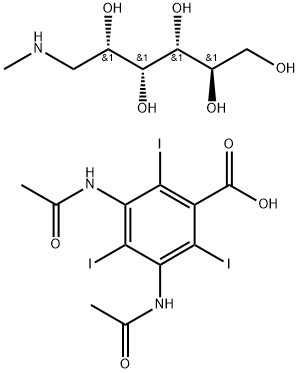
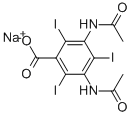
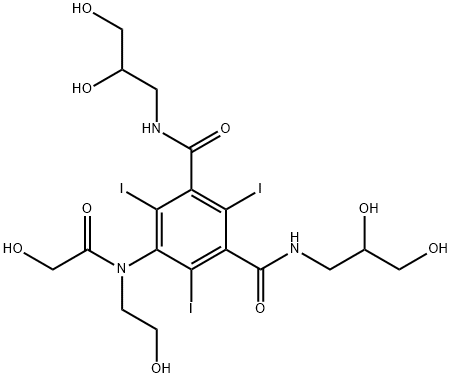
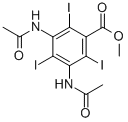

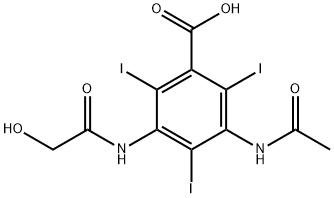
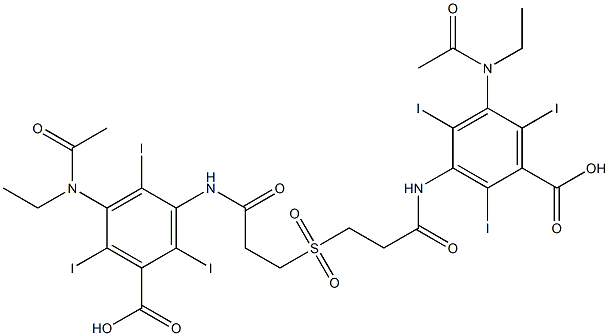
You may like
-
 117-96-4 Diatrizoic acid 98%View Details
117-96-4 Diatrizoic acid 98%View Details
117-96-4 -
 117-96-4 98%View Details
117-96-4 98%View Details
117-96-4 -
 Diatrizoic acid 95% CAS 117-96-4View Details
Diatrizoic acid 95% CAS 117-96-4View Details
117-96-4 -
 Diatrizoic Acid CAS 117-96-4View Details
Diatrizoic Acid CAS 117-96-4View Details
117-96-4 -
 Diatrizoic acid CAS 117-96-4View Details
Diatrizoic acid CAS 117-96-4View Details
117-96-4 -
 20677-73-0 (2,2-diethoxyethyl)methylamine 98%View Details
20677-73-0 (2,2-diethoxyethyl)methylamine 98%View Details
20677-73-0 -
 3-(4-(hydroxyamino)-1-oxoisoindolin-2-yl)piperidine-2,6-dione 98%View Details
3-(4-(hydroxyamino)-1-oxoisoindolin-2-yl)piperidine-2,6-dione 98%View Details -
 57381-49-4 2-bromo-4-chlorobenzonitrile 98%View Details
57381-49-4 2-bromo-4-chlorobenzonitrile 98%View Details
57381-49-4
